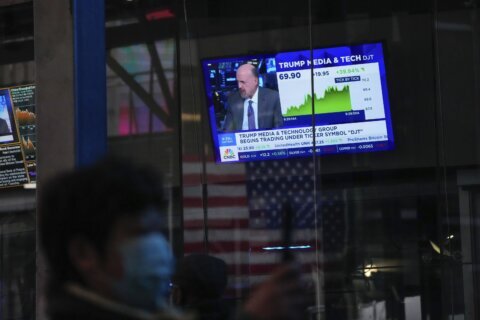A little more than half of Americans (51%) are part of the middle class, according to a recent report by the Pew Research Center. But how has this segment changed over time?
Between 1971 and 2023, the middle class shrank by 10%, while the upper and lower classes grew by 8% and 3%, respectively.
Here’s a closer look at why experts say the middle class is shrinking and how the definition of middle class can vary depending on who you ask.
Why Is the Middle Class Shrinking?
Despite the decrease, the American middle class still accounts for the largest share of the U.S. population (51%). However, it generates only 43% of the overall income as of 2022, down from 62% in 1970.
Conversely, the upper class’s share of overall income has increased from 29% to 48% over the same period — and surpassed the middle class in 2009.
Experts say this shift is, in part, driven by changes in business models, along with the exponential revenue growth of “superstar firms” and the world’s billionaires.
[Related:Which Generation Has the Most Wealth?]
Increasing Number of Near-Zero Marginal Cost Businesses
“One of the key factors driving the widening gap between upper-class incomes and those of the middle and lower classes is the phenomenon of near-zero marginal costs,” Drayton D’Silva, CEO and chief investment officer at Tower Hills Capital, said in an email.
He explained that in industries like technology and finance, where products and services are primarily digital, it costs almost nothing to serve an additional customer.
“This scalability enables businesses to expand their reach exponentially at minimal extra cost,” D’Silva said, “Companies pay premium wages to hire the most skilled workers because a marginally more productive employee can have a disproportionate impact.”
Rise of Superstar Firms
Another factor that contributed to the shrinkage is the industry-leading companies taking advantage of this opportunity to scale endlessly.
“A small group of superstar firms dominates these scalable industries. These firms are exceptionally innovative and productive, capturing large market shares and profit margins by offering superior or more cost-effective products and services,” D’Silva said.
He cites a 2018 Quarterly Journal of Economics study, which suggests that about two-thirds of the growth in income inequality since 1980 can be attributed to the earnings gap between employees at these superstar firms and those elsewhere.
“The prevalence of high-income individuals in tech and finance industry towns such as the Bay Area, Seattle, Boston and the Bridgeport-Stamford-Norwalk corridor, further illustrates this trend,” D’Silva said.
As does a quick look at the Forbes World’s Billionaires List, where you’ll find that many of the richest people in the world made their fortunes in the tech industry, including Jeff Bezos (Amazon), Mark Zuckerberg (Meta), Larry Ellison (Oracle) and Bill Gates (Microsoft).
Impact of COVID-19 Pandemic’s
It’s also worth noting that global billionaire wealth spiked 1.5% between 2020 and 2021, according to a 2022 report from the World Inequality Lab.
Lucas Chancel, the co-director at the World Inequality Lab, says the COVID crisis exacerbated inequalities between the very wealthy and everyone else, according to a 2021 article published by Reuters. The article also highlighted that the super rich benefitted due to the global economy’s shift online and rising asset prices, according to analysts.
And the growth in the share of household wealth owned by the world’s billionaires hasn’t slowed down. It’s continued to break records every year since the pandemic. There are 141 more billionaires in 2024 than a year prior, and they’re now worth $14.2 trillion — up $2 trillion from 2023 and $1.1 trillion in 2021.
Are You Middle-Class?
As the American middle class shrinks, you may wonder where you stand. According to the Pew Research Center report, the median 2022 household income for a three-person household is as follows for each income tier:
— Upper-class household: $256,920, a 78% increase from 1970
— Middle-class household: $106,092, a 60% increase from 1970
— Lower-class household: $35,318, a 55% increase from 1970
But how a person perceives their social class extends beyond what a W-2 income form claims they earn, experts say.
[Related:Are You a Mini-Millionaire?]
The majority of participants in a 2023 poll by the Washington Post, for instance, said that Americans need to do the following to be considered part of the middle class:
— Own a home
— Have a secure job
— Be able to save money
— Have the time and money to take vacations
— Have health insurance.
— Be able to afford a $1,000 emergency.
— Be able to pay all your bills on time.
— Have a job with paid sick leave.
— Be able to retire in comfort.
You can look at income, education, marital status, location, family history, and a host of other factors to find out where you fall. But the bottom line is this: Finding the answer is more complex than just looking at a number.
“It’s more of a feeling,” says Jeffrey M. Jones, a senior editor at Gallup.
“It’s about economic security, being able to afford what you need but then also maybe a bit beyond the basics. Maybe vacations, something extra recreational, a third car, money to do things beyond what you need to live,” he says.
[Read: How to Calculate Your Net Worth.]
Where you fall in the American economic class system also may not stay consistent throughout your life — or even from year to year.
For example, a law student may earn a modest graduate student stipend of $20,000 per year, which would put them in the low-income class. But education and future earnings will most likely catapult their income and class placement to a higher level down the road.
“People really need to understand that whatever’s happening (with their class rank) today is part of a trajectory, part of their life,” says Stephen Rose, a nonresident fellow in the Income and Benefits Policy Center at the Urban Institute and a research professor at the George Washington Institute of Public Policy.
While the upper class may be growing wealthier at an alarming rate, middle- and lower-class incomes are still growing. Moreover, the majority of those leaving the middle class are moving upward, which the Pew Research Center says is a sign of economic progress.
More from U.S. News
What Net Worth Do You Need to Retire?
Are You Rich? How the Wealthy Are Defined
How to Minimize 4 Financial Management Disasters That Come With Aging
Why Is the Middle Class Shrinking? originally appeared on usnews.com
Update 06/27/24: This story was previously published at an earlier date and has been updated with new information.







